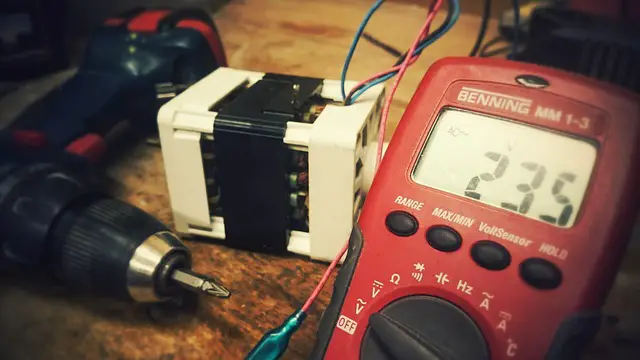
What is Impedance matching?
It is the balance between the source and load impedance to ensure the load receives maximized power and it is very necessary for optimal flow of power between two interconnected devices.
We know that Impedance combines both resistance (R) and reactance (X) and it is expressed as a complex number: Z = R + jX and while resistance represents the opposition to the flow of AC due to the resistive component of circuit, reactance is related to the circuit’s inductive and capacitive elements. When the impedance of interconnected devices is not appropriately matched, power losses, signal degradation, and other operational issues can occur.
Purposes of Impedance matching
It serves several vital purposes in electrical and electronic systems:
- Power Transfer Efficiency: When the source and load have matched impedance, maximum power transfer occurs, minimizing power loss and improving overall system efficiency.
- Signal Integrity: In applications like radio frequency (RF) transmission, impedance matching ensures that signals are transmitted with minimal distortion and attenuation.
- Voltage Reflection: Mismatched impedance can lead to voltage reflections, causing standing waves in transmission lines. Impedance matching helps reduce these reflections, preventing signal degradation.
- Minimizing Heat Generation: Reducing power loss due to impedance mismatch helps prevent excessive heat generation in components, prolonging their lifespan.
The goal of any electrical and electronic design engineer is to ensure that there is maximum power delivery from the system source to the electric load. In almost all electrical and electronic applications, impedance matching is a necessity.
Impedance Matching in Real-World Applications
This matching is a critical consideration in various practical applications:
- Audio Systems: Matching the output impedance of an audio source, like an amplifier, to the input impedance of speakers or headphones ensures optimal sound quality.
- RF and Microwave Communication: Impedance matching is crucial in radio transmitters, receivers, and antennas to maximize signal strength and minimize losses.
- High-Frequency Electronics: In applications like radar systems, impedance matching is essential to maintain signal integrity at high frequencies.
- Power Electronics: In power distribution systems, impedance matching can reduce losses and improve efficiency.
- Transformers and Transmission lines: To run them in parallel and for max. power transfer of power impedance matching is done.
- Medical Devices: Devices like ultrasound machines and MRI scanners require matching for accurate signal transmission and reception.
For more insight on this, you may watch this video:
(FAQ) about impedance matching:
Why is impedance matching important?
This matching is crucial to prevent signal loss, signal distortion, and signal reflections in electrical and electronic systems. It ensures that power is efficiently transferred from the source to the load.
What is impedance?
Impedance is a measure of opposition to the flow of alternating current (AC). It is a complex quantity consisting of resistance and reactance, typically represented as Z = R + jX, where R is resistance and X is reactance.
When is impedance matching necessary?
It is necessary when there is a significant difference between the output impedance of a signal source (e.g., a generator or amplifier) and the input impedance of a load (e.g., a transmission line or a receiver).
What are the consequences of poor impedance matching?
Poor matching can result in signal reflections, reduced power transfer, signal distortion, and a decrease in the overall efficiency of a system.
What components are used for impedance matching?
Components used for this matching include transformers, transmission lines, stubs, and matching networks (LC circuits or other passive components) designed to adjust impedance levels.
How do you calculate the required impedance for matching?
The required impedance for matching can be calculated using the formula Z_match = √(Z_source * Z_load), where Z_match is the required matching impedance, Z_source is the source impedance, and Z_load is the load impedance.
Is impedance matching only relevant for RF and microwave systems?
No, it is relevant in a wide range of applications, including audio, video, and RF/microwave systems. It’s essential whenever signal transmission between components is involved.
Can impedance matching be achieved with passive components only?
It can be achieved with passive components such as resistors, capacitors, and inductors. However, in some cases, active devices like amplifiers are used for precise matching.
What is the VSWR (Voltage Standing Wave Ratio) in the context of impedance matching? VSWR is a measure of how well the system is impedance-matched. A VSWR of 1 indicates perfect impedance matching, while higher values suggest imperfect matching, indicating the presence of standing waves and signal reflections.
What is the role of a balun in impedance matching?
A balun (balanced to unbalanced transformer) is used to convert between balanced and unbalanced transmission lines. It can be part of an impedance matching network in systems with different impedance requirements.
Can impedance matching be adjusted dynamically or does it need to be fixed?
Impedance matching can be designed to be either fixed or adjustable, depending on the application. Adjustable matching networks are used when you need to adapt to changing conditions.
Is impedance matching always 1:1, or can it be in different ratios?
Impedance matching is not limited to 1:1 ratios. It can involve various ratios, depending on the specific requirements of the system and components involved.
How do I choose the right impedance matching technique for my application?
The choice of impedance matching technique depends on the source, load, frequency, and other factors. Consultation with an electrical engineer or expert in the field is often necessary for selecting the appropriate method.
What are some common applications of impedance matching in everyday life?
Impedance matching is used in numerous applications, including audio systems, antennas, cell phone networks, radio and television broadcasting, and many other electronics and communication systems.